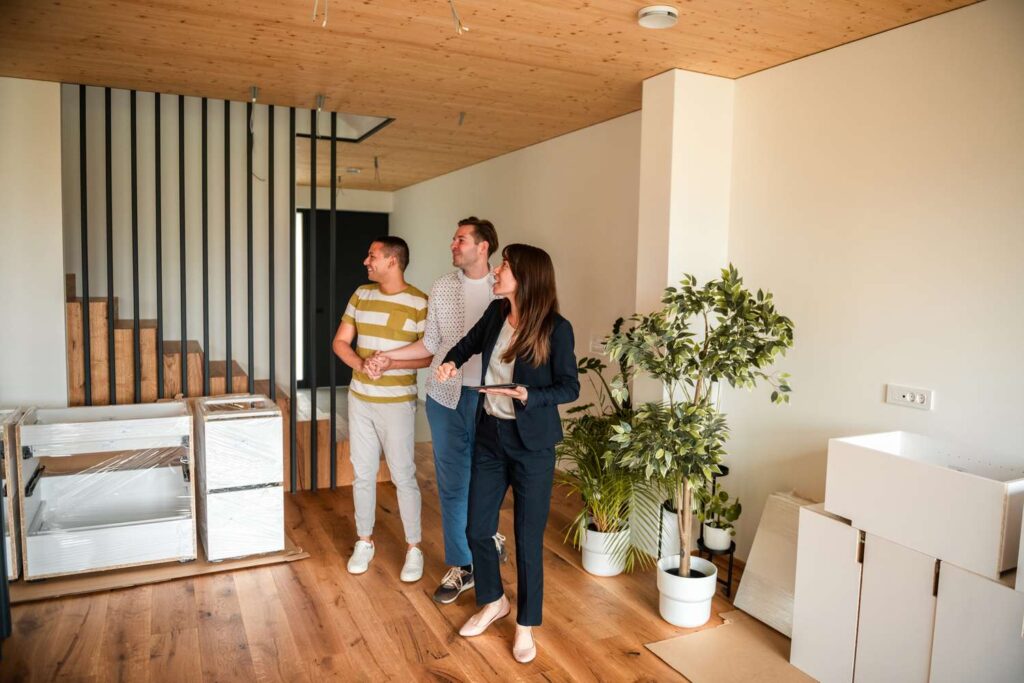According to a new Redfin analysis, Americans must make $76,995 annually to afford the median priced starter home ($250,000), a 0.4% decrease from the previous year. Since August 2020, when mortgage rates were getting close to a record low, that is the first annual drop.
Although the cost of a starter house has increased by 4.2% annually, the income required to buy one has decreased due to a sufficient decrease in mortgage rates. For the first time in three years, the average interest rate on a 30-year mortgage decreased annually in August, from 7.07% to 6.5%. Since then, it has decreased even further, and it is now at 6.08%. Still, the income needed to finance a starter home is only 3.6% below the record high of $79,857 recorded last fall.
“It’s great news that starter homes are becoming a little more affordable, but there’s a catch,” said Elijah de la Campa, Senior Economist at Redfin. “Starter homes aren’t what they used to be. A decade ago, a turnkey four-bedroom house in a nice neighborhood was often considered a starter home, but today, a small fixer-upper condo is often all a first-time homebuyer can afford. The American Dream is changing; for many, it no longer involves a house and a white picket fence.”
Prospective homeowners should be advised that the affordability of starter homes might not increase significantly, if at all, in the near future. Since the Federal Reserve’s most recent interest rate reduction and its future reduction plans were widely expected, mortgage rates have already reflected most of these changes. Long-term rates, such as mortgage rates, typically don’t decrease by nearly the same amount when the Fed lowers short-term interest rates. Waiting to buy will probably result in a bigger price tag and down payment because home prices also tend to rise over time.
Both Donald Trump and Kamala Harris have expressed a desire to lower the cost of homes, so when November rolls around, purchasers may have more information about how the next president will address the issue of housing affordability.

Starter Home Affordability Has Decreased Since the Pandemic
With a projected yearly income of $83,853, the average household makes 8.9% more than what is required to purchase the median starter home. Compared to August of last year, when the average household only made 3% more than they required, it is an increase. However, this is a regression from before the pandemic; in August 2012, the average household earned 113% more, or more than twice as much, as what was required to afford the median cost starter home, compared to 57.1% more in August 2019.
During the pandemic home buying craze, there was a severe shortage of homes available for purchase, which led to a rise in demand driven by historically low mortgage rates, which in turn caused housing prices to soar. August 2019 saw a 51.1% increase in starter home prices, and August 2012 saw a 163% increase in starter home prices. With prices for homes rising 33.4% from 2019 and 58.1% from 2012, wages have not kept up with the rate of inflation. Otherwise, the median household income hasn’t even increased by double since 2012, yet the income required to finance a starter home has tripled.
The majority of starter home listings—some 75.8%—are within the means of a household earning the median income. Although it’s an increase from 72.6% in August of previous year, it’s a decrease from around 100% in 2012 and 2019. Naturally, not all purchasers of entry-level homes make the median income; a family making 80% of the median income would only be able to purchase 43.1% of listings.
“While many people make enough on paper to afford a starter home, they often have other expenses like student debt that are preventing them from buying,” said Blakely Minton, a Redfin Premier real estate agent in Philadelphia.
In order to purchase the median cost starter home, a household earning the median salary would have to pay 27.5% of their wages on housing—a decrease from 29.1% during the previous summer. Because they would be spending less than 30% of their income on housing if they bought the average starter home, the typical household would not be considered “cost burdened.” However, compared to previous years, they are more likely to be burdened by costs; in both 2019 and 2012, a median-earning household would have needed to spend less than 20% of their wages to purchase the average starter home.
“Starter-home buyers are skewing older than they used to. When I first started working in real estate 20 years ago, they were kids fresh out of college. Now grads are saddled with huge student loans and are moving back in with Mom and Dad or renting,” Minton said. “I bought my first house at 23, but that’s hard to do today, in part because first-time buyers are competing with older Americans who want to downsize and are able to make higher offers.”
Pandemic Boomtowns See Steepest Drops in Income Needed to Afford a Starter Home
The typical starting home price in Anaheim, California, is $217,300, which is 8.1% less than the previous year. This is the biggest decrease among the 50 most populous metropolitan areas in the United States. The next cities were Dallas (-4.7%), West Palm Beach, FL (-5%), Austin, TX (-5.8%), and Phoenix (-4.8%).
As a large number of out-of-towners migrated into several of the aforementioned metro areas during the pandemic, home values skyrocketed. However, they are now starting to decline. More than any other major city, Austin’s starter-home prices have decreased by 3% in the past year. Declines were also seen in Dallas and West Palm Beach. It’s important to remember that Anaheim is still among the most expensive metro areas in the U.S., with less than 0.1% of starter home listings being within the means of a household making the median income.
In 2024, starting homes in four metro areas changed from being unaffordable in 2023 to being affordable, requiring a household with a median salary to pay less than 30% of their income to purchase a conventional beginning home. All four metros are in Florida or Texas, which have lately seen their housing markets slump amid growing house supply and intensifying climate risk.
In West Palm Beach, the median priced starter home would now require a household earning the median salary to spend 28% of their earnings on housing—a decrease from 31% in August of last year. Dallas dropped from 32.1% to 29.1%, Fort Worth from 30.2% to 28.3%, and Fort Lauderdale from 30.9% to 28.2%.
Midwest Home to 3 of 5 Metros With Biggest Increases in Income Needed to Afford a Home
The highest increase among the metro areas Redfin reviewed is in Chicago, where buyers must make an annual salary of $77,238 in order to afford the median priced starter house, an increase of 15.4% from the previous year. Following were Pittsburgh (9.6%), Cincinnati (9.7%), Los Angeles (14.7%), and Detroit (14.5%).
The income required to afford a home is rising in these metro areas because these areas have had some of the largest increases in property prices. More than any other large metro, Detroit had a 22.8% year-over-year increase in starter house prices in August. Cincinnati (15.6%) and Pittsburgh (18.4%) were the next two. Above-average growth were also observed in Los Angeles and Chicago.
Due to its reputation as a more inexpensive region, the Midwest has seen a surge in homebuyers in recent years. The increase in demand has contributed to the rise in property prices.
To read the full report, including more data, charts, and methodology, click here.






